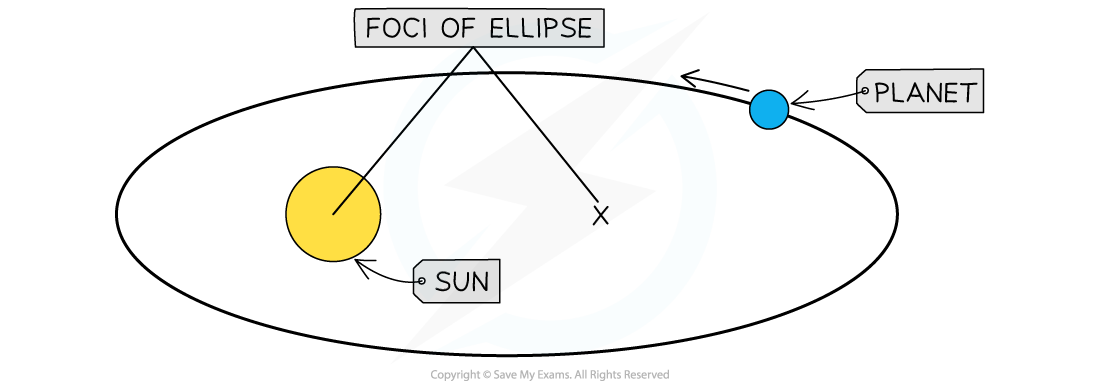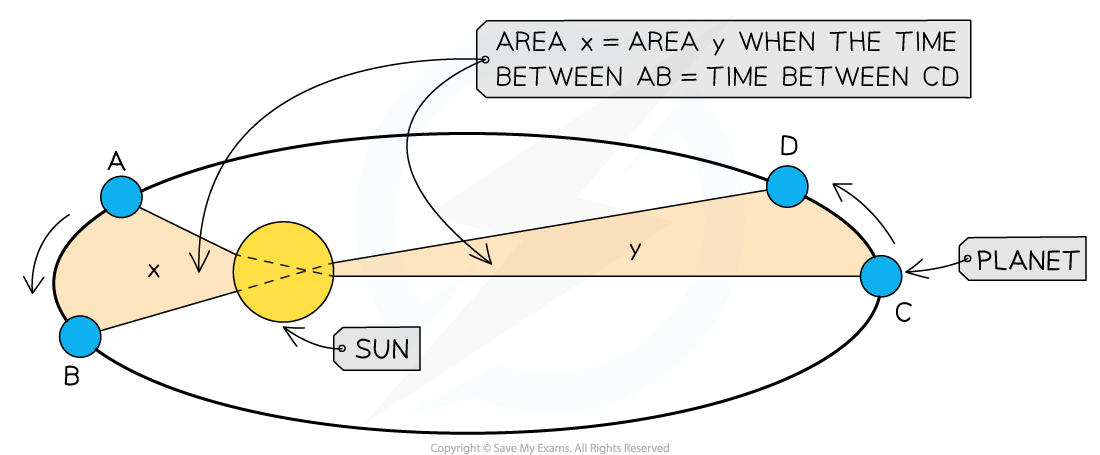Kepler's Three Laws of Motion (OCR A Level Physics): Revision Note
Exam code: H556
Kepler's Three Laws of Motion
Kepler's First Law
Kepler's First Law describes the shape of planetary orbits
It states:
The orbit of a planet is an ellipse, with the Sun at one of the two foci

The orbit of all planets are elliptical, and with the Sun at one focus
An ellipse is just a 'squashed' circle
Some planets, like Pluto, have highly elliptical orbits around the Sun
Other planets, like Earth, have near circular orbits around the Sun
Kepler's Second Law
Kepler's Second Law describes the motion of all planets around the Sun
It states:
A line segment joining the Sun to a planet sweeps out equal areas in equal time intervals

The consequence of Kepler's Second Law is that planets move faster nearer the Sun and slower further away from it
Kepler's Third Law
Kepler's Third Law describes the relationship between the time of an orbit and its radius
It states;
The square of the orbital time period T is directly proportional to the cube of the orbital radius r
Kepler's Third Law can be written mathematically as:
T2 ∝ r3
Which becomes:
= k
Where:
T = orbital time period (s)
r = mean orbital radius (m)
k = constant (s2 m–3)
In the case of our solar system, k is constant for all planets orbiting the Sun
Examiner Tips and Tricks
You are expected to be able to describe Kepler's Laws of Motion, so make sure you are familiar with how they are worded.
Applications of Kepler's Third Law
Kepler's Third Law, the fact that T2 ∝ r3 applies to any body in orbit about some larger body
This means that it can be applied to other systems, not just the planets in our Solar System orbiting the sun, for example:
The moons orbiting other planets, like the four moons of Jupiter (Io, Europa, Callisto and Ganymede)
Exoplanets in orbit about foreign stars
This is useful because measuring things like time period and orbital radius are commonplace in modern astrophysics
Therefore, useful and interesting data about the mass of orbital systems can be deduced from experimental data

Unlock more, it's free!
Did this page help you?